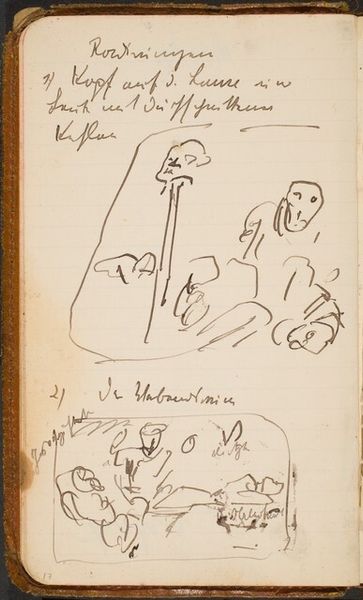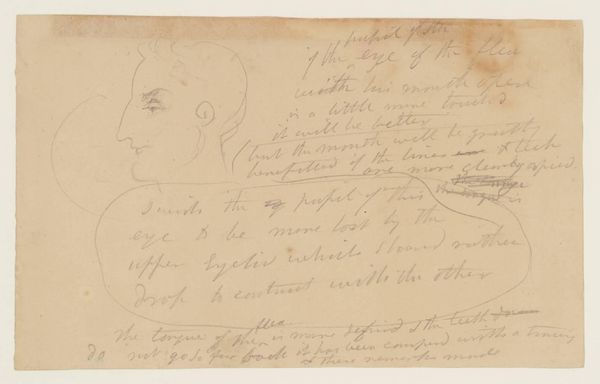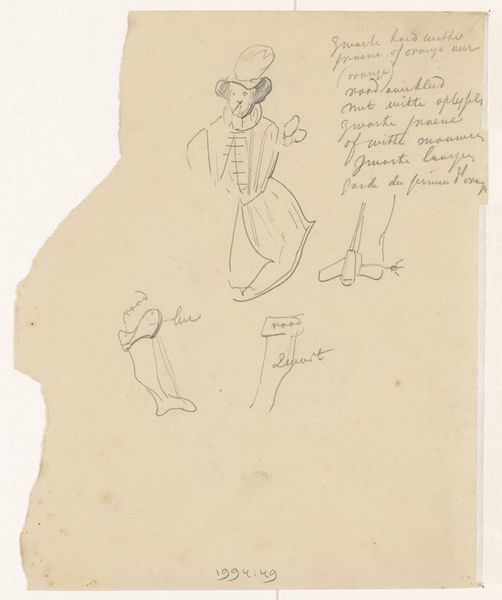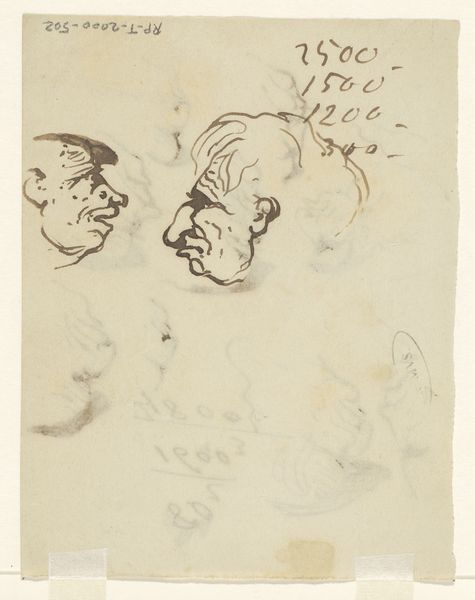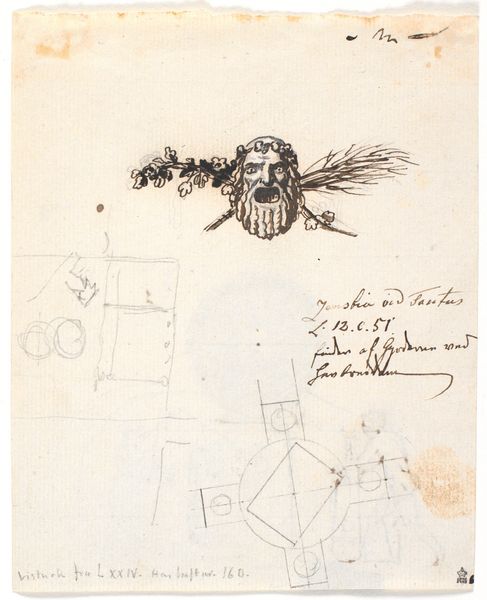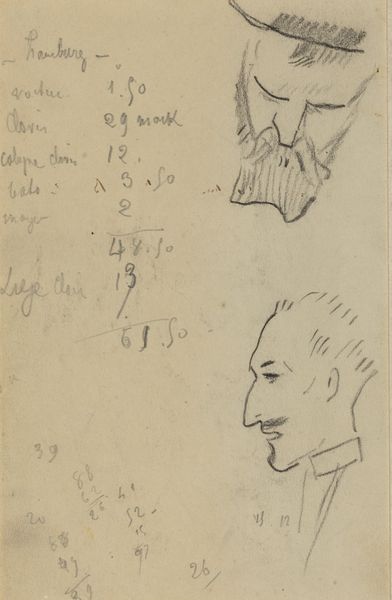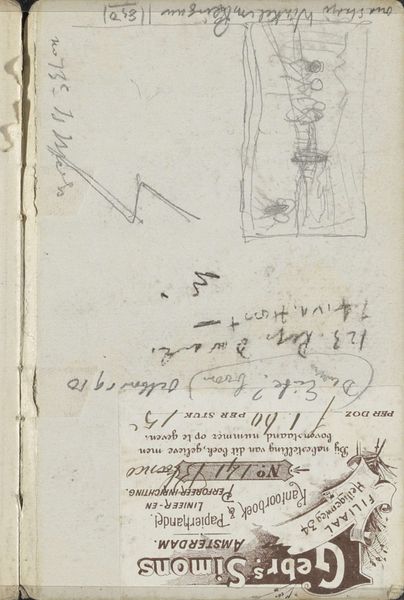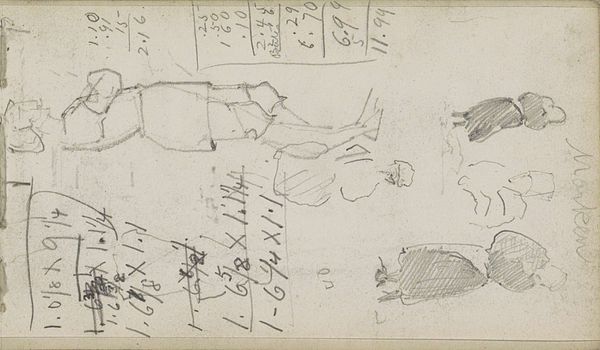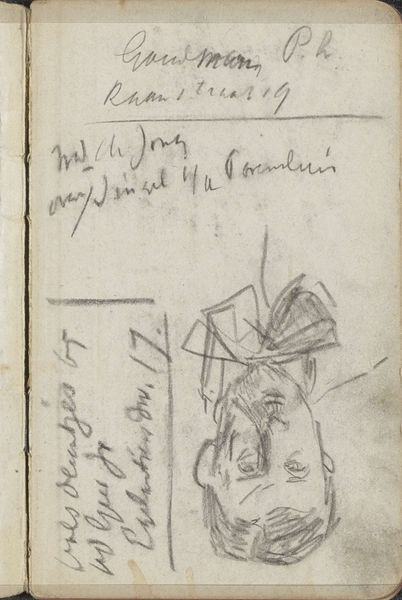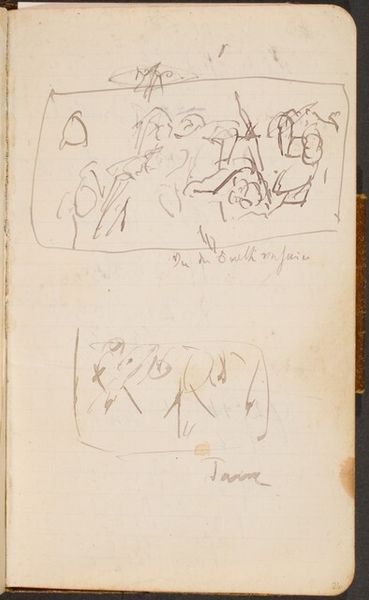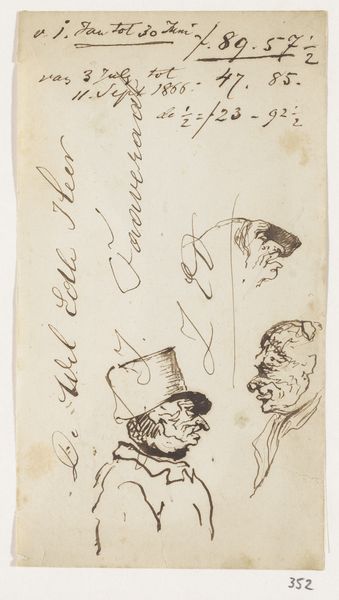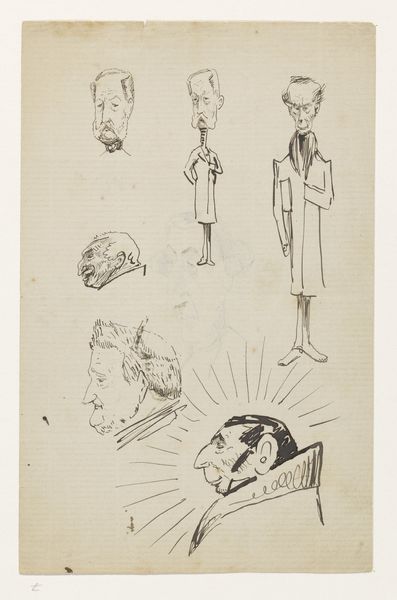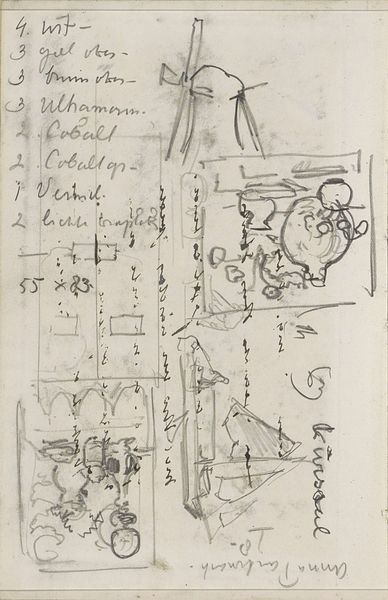
drawing, ink, pen
#
drawing
#
pen sketch
#
caricature
#
ink
#
romanticism
#
pen
#
genre-painting
Dimensions: Overall (approximate): 23.1 x 19 cm (9 1/8 x 7 1/2 in.) support: 40.7 x 30.5 cm (16 x 12 in.)
Copyright: National Gallery of Art: CC0 1.0
Curator: Let's discuss "Satirical Sketches," attributed to George Cruikshank. It appears to be an ink drawing, with several figures sketched across the page. My immediate impression is one of organized chaos. There's a raw, unfiltered energy here. Editor: I see it too—the frenetic line work immediately suggests it was made rather quickly, maybe even spontaneously. The quality of the ink suggests a standard iron gall ink, readily available at the time for sketching and personal use. Notice how the variable line weight communicates form effectively with minimal effort. Curator: Exactly. Considering Cruikshank’s reputation, especially his commentary on social ills through caricature, it makes me consider which segments of society might be targets of this particular sketch. The figure with the devil horns and a weapon…is that a symbol of corrupt power? The bloated face leering over the desk…is that an indifferent banker, or perhaps a politician? Editor: That’s an astute reading. But looking at it purely from a production perspective, I'm drawn to how this image might function in relation to his larger body of work. Could this be a preparatory sketch for a more elaborate print? How did he use these initial drawings to inform the final, mass-produced product that reached a wider audience? Curator: That’s crucial because mass production changes the relationship to the audience! If this sketch is, in essence, a precursor, we have to consider Cruikshank’s readership, the political landscape they inhabited, and his role as a commentator—perhaps even as a catalyst for change within the cultural sphere. Was he truly subversive? Did his illustrations reflect or shape the evolving attitudes toward class and governance? Editor: Those questions lead me to wonder about Cruikshank's own socio-economic status as an artist, and his connection to the engravers and printers who materialized his sketches into salable artwork. Was he merely catering to popular opinion or deliberately trying to subvert societal norms, given that his livelihood depended upon public acceptance? Curator: Right. It reminds us that we must unpack layers of meaning, intent, and the surrounding cultural context to approach the artwork fully. The ink itself, the pressure applied, even the choice of paper: all speak to this nexus of creative and social forces. Editor: Yes, this single sketch, with its rapidly applied lines, tells a much broader story. Analyzing both its physical and societal materials enhances its artistic impact. Curator: A compelling insight—I will consider those societal production aspects when approaching this piece in the future. Thank you for providing a materialist viewpoint on the complex context of its execution!
Comments
No comments
Be the first to comment and join the conversation on the ultimate creative platform.
